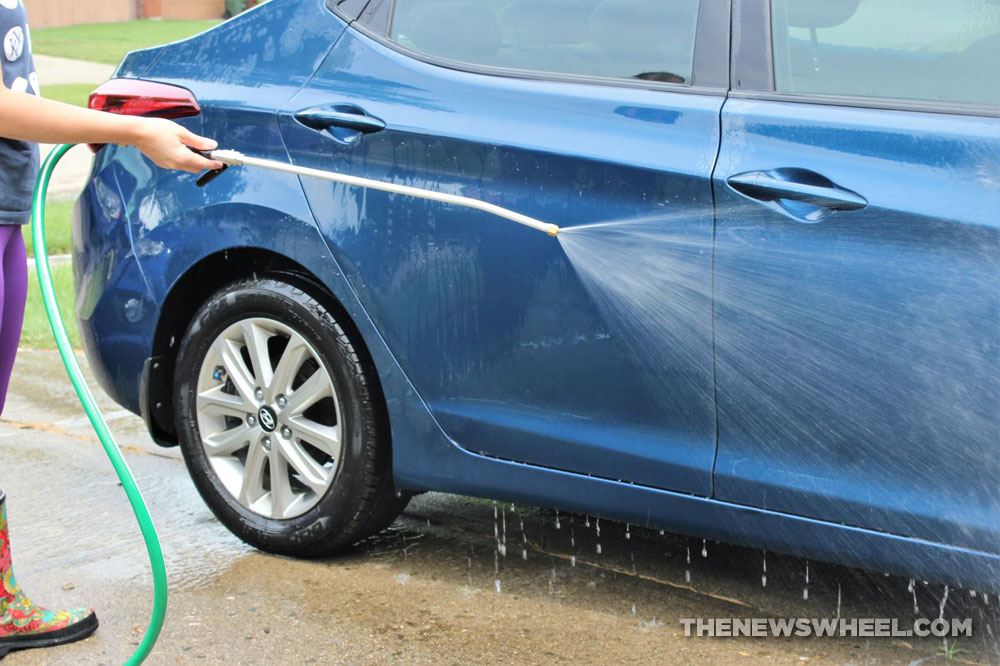 Photo: The News Wheel
Photo: The News Wheel
Using a high-power pressure washer on your car may seem like a fast, efficient way to remove dirt, but it can cause damage to the surface and delicate parts of your vehicle. If you intend to use a pressure washer to clean your car at home instead of running it through an automatic drive-through (which can also cause damage), here are some basics you should know to properly and safely pressure-wash your car.
Car Maintenance Tips: Why and how to change your vehicle’s air filter on your own
A pressure washer uses motorized air pumps and jets to propel water through a highly durable hose which expels a spray at a rate that’s at least four times the strength of a normal garden hose (and could reach up to 100 times the strength if using a professional unit). This concentrated beam of water is very effective at loosening grime and contaminants that have adhered to surfaces like concrete, wood, and metal.
They take a lot less time and effort than a normal garden hose and scrub brush. Plus, they actually use less water than a garden hose does — sometimes up to half the amount expelled per minute. They’re portable, easy to hook up and operate, and relatively inexpensive for a decent model.
Read More: Car washing tips from the experts
If you decide to use a pressure washer on your car, make sure you pick a basic consumer model instead of a top-of-the-line industrial unit. You don’t need that much extra strength! Look for one that can operate at 1,500 PSI or below.
Start the washer on its lowest setting, always standing at least two feet away from the car (though you can get closer to the wheels), never aiming it in a direct, perpendicular angle to the surface. Always slant the jet 30-500 degrees. Don’t linger on sensitive spots like side mirrors, backup camera lenses, exterior sensors, unlocking buttons, etc.
When it comes to washing, follow the same process as if you were washing your car with a garden hose. Start with a rinse before using a sponge to apply a soapy coat of automotive wash-and-wax. Then, rinse the soap off with the hose, working from the roof down, at a slanted angle just like the initial rinse.
Clearly, using a higher-pressure hose is a more effective and efficient way of washing your car, but you don’t have to purchase or rent a pressure washer machine to have an enhanced spray.
For a fraction of the price, you can buy a high-pressure nozzle for your normal household garden hose. It screws onto the tip of the hose like a normal nozzle, but it intensifies the spray’s pressure by driving it through a tiny, pointed nose — much like how certain shower heads intensify the water’s spray.
It’s a great compromise to obtaining an actual pressure washer that still does an improved job lifting tarnishes off your car while utilizing less water.
Aaron is unashamed to be a native Clevelander and the proud driver of a Hyundai Veloster Turbo (which recently replaced his 1995 Saturn SC-2). He gleefully utilizes his background in theater, literature, and communication to dramatically recite his own articles to nearby youth. Mr. Widmar happily resides in Dayton, Ohio with his magnificent wife, Vicki, but is often on the road with her exploring new destinations. Aaron has high aspirations for his writing career but often gets distracted pondering the profound nature of the human condition and forgets what he was writing… See more articles by Aaron.



